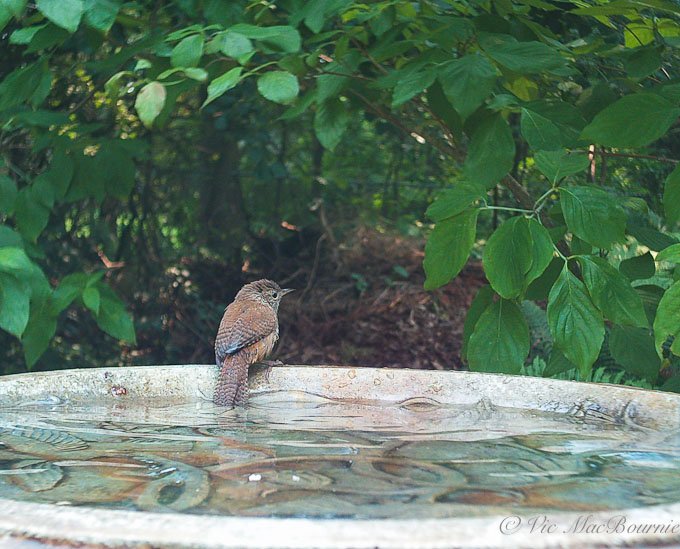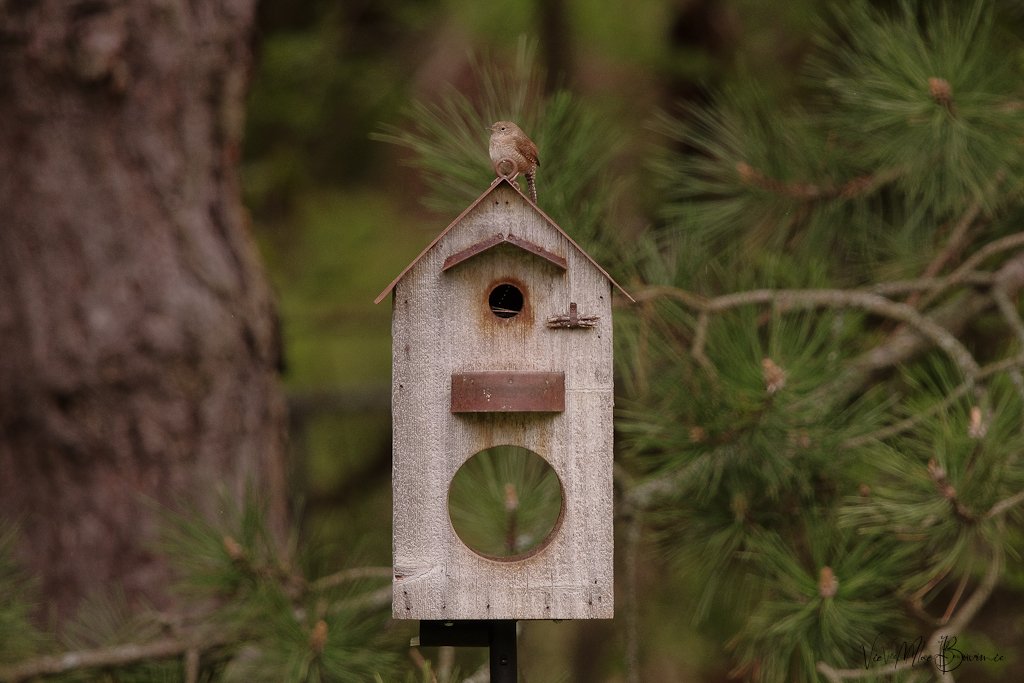Carolina wren: How to attract this spunky little insectivore
Rewild your yard to attract Carolina Wrens
The Carolina wren is a noisey, spunky little bird that is, at least from a distance, easily mistaken for a sparrow.
But up close, there is no mistaking these little guys.
If you are looking to attract Carolina Wrens to your yard, you will have to create habitat that encourages an abundance of insects in your yard. If your backyard is a typical neat and tidy suburban yard with few native flowers, shrubs and trees, you will need to get to work rewilding the space.
It goes without saying that pesticides have no place in the garden. Native trees, shrubs and plants are vital to attract insects along with brush piles and more natural areas in the garden that will be attractive to insects. A pond is also an attractive place for all types of birds and wildlife including insect life.
The Carolina wren is a small, sometimes elusive bird that makes its presence known, especially in spring when its song fills woodlands and backyards.
In our yard, the Carolina wrens are often seen on the ground checking out the leaf litter in search of insects. In spring they are busy checking out trees and shrubs for caterpillars and small insects.
Although Carolina Wrens are primary insectivores, they will readily come to backyard feeders, especially in winter where they will feed on suet, peanuts and sunflower seeds.
How large are Carolina wrens?
Although it is the second largest wren in the United States – just behind the cactus wren – it measures only about five and a half-inches (12.5 to 14 cm) in length, with an 11-inch (29 cm) wing span.
They can be quite shy and difficult to see in the woodlands and forests where they are common in the southeastern United States and up into southern parts of Canada. Once on the nest, however, they become quite active and vocal little visitors.
If you are trying to identify the sexes, all the chattering is coming from the females while the male likes to sing.
A Carolina Wren searches through debris for food in early fall.
Carolina Wrens (Thryothorus ludovicianus) make their living in open woodlands and are regulars in naturalized yards where they can be seen working brush piles and tangles looking for their primary food source – insects.
For more on using native plants to attract birds and other wildlife, be sure to check out my article on Using native plants to attract birds. If you are using feeders, take a moment to check out my article on using recycled resin feeders rather than wood ones.
Other birds, such as American Robins and Indigo Buntings are primarily insect-eating birds and can be difficult to attract to your yard with just bird feeders.
For years, we’ve had these fiesty birds nesting outside our bedroom window in spring. A word of caution, if you don’t like getting up early in the morning, don’t hang a nesting box outside your window. These little guys are a lot noisier than you my think given their size. To hear their song check out the CornellLab audio recording.
How can you identify Carolina Wrens?
Carolina Wrens have reddish/cinnamon plumage on their backs and buff-coloured undersides. They weigh in at only 18 to 23 g (0.63 to 0.81 oz), and are easy to identify with their white throats and eyebrow stripe, and long, upward-cocked tail.
This image helps to show the diminutive size of the Carolina Wren while it dries off after a good soaking in the birdbath.
Climate plays a major factor in this wren’s range
Although the Carolina wren is common enough throughout the southeastern United States up through southern Ontario, the birds’ northern range varies depending on the severity of the winter.
Climate change is likely playing a role in this bird making its way farther north and remaining in more northern areas throughout the winter.
The birds’ numbers expand into more northern ranges in mild winters, only to shrink back during more severe winters.
Bird feeders can play important role in Carolina Wren survival
According to a 2011 study in Michigan, bird feeders with suet and peanuts play an important role in survival rates of these birds during harsh winter months.
The CornellLab posted an interesting article stemming from Project FeederWatch that focused on Carolina Wrens and bird feeders during winter months. Carolina Wrens’ diets, is known to be only about five per cent seeds and other vegetable matter with the remaining 95 per cent being insects.
Using a recycled plastic suet feeder like the one below, is a good way to provide a food source for woodpeckers, Carolina Wrens and other insect-eating birds. The benefits of using the recycled plastic feeders vs wood feeders is spelled out in one of my earlier posts.
Wild Birds Unlimited sells a number of the recycled plastic suet feeders that are worth checking out.
In winter, they struggle to survive during periods of high snow cover where insects are difficult to find.
In the Michigan study, three different habitats were monitored from city parks, residential areas as well as rural areas. The study showed that the wrens abandoned these sites when there were no feeders available.
The conclusion: When Carolina Wrens’ food supply is limited by heavy snow and cold temperatures, bird feeders play a critical role to their survival.
Their study also concluded that Carolina Wrens prefer suet and peanuts and that “one peanut alone can provide more than a third of their daily metabolic need!”
In Conclusion: Carolina Wrens need our help
It’s easy to think our bird feeders are vital to keeping backyard birds healthy. Just look out the window after a snowstorm and you’ll wonder how these birds could survive without us. But they do. And what many of us fail to realize is that many of the birds in our neighbourhood don’t even, or rarely, eat seeds.
In fact, most birds, even those that appear at our feeders, depend on insects for their survival and the survival of their offspring.
Attracting these birds requires more than putting out feeders. Creating habitat for both the birds and, more importantly, insects is the key to these birds’ survival.
Let parts of your yard go a little wild. Build a brush pile and include some form of water in your yard and chances are you will begin to see more insect-eating birds like the Carolina Wren.




